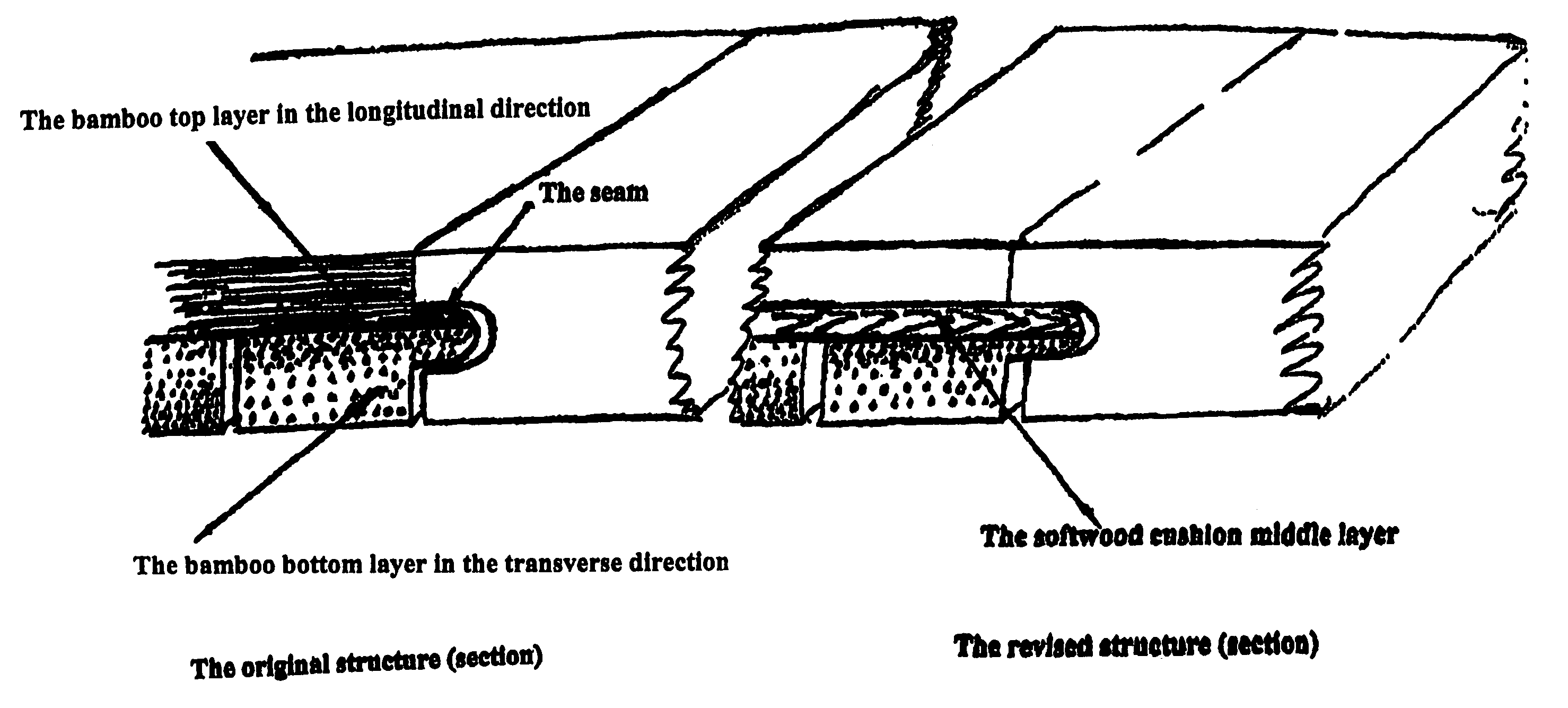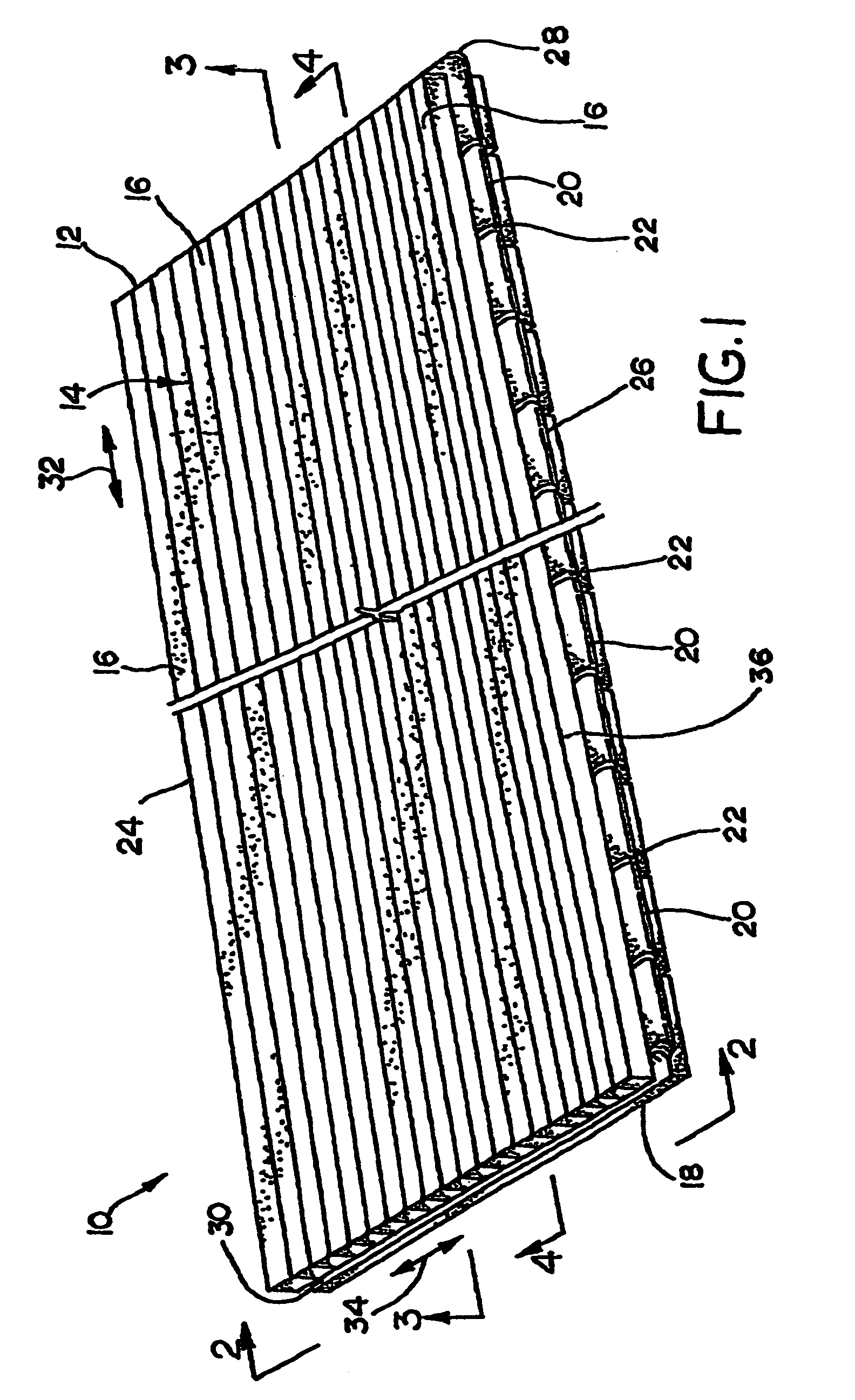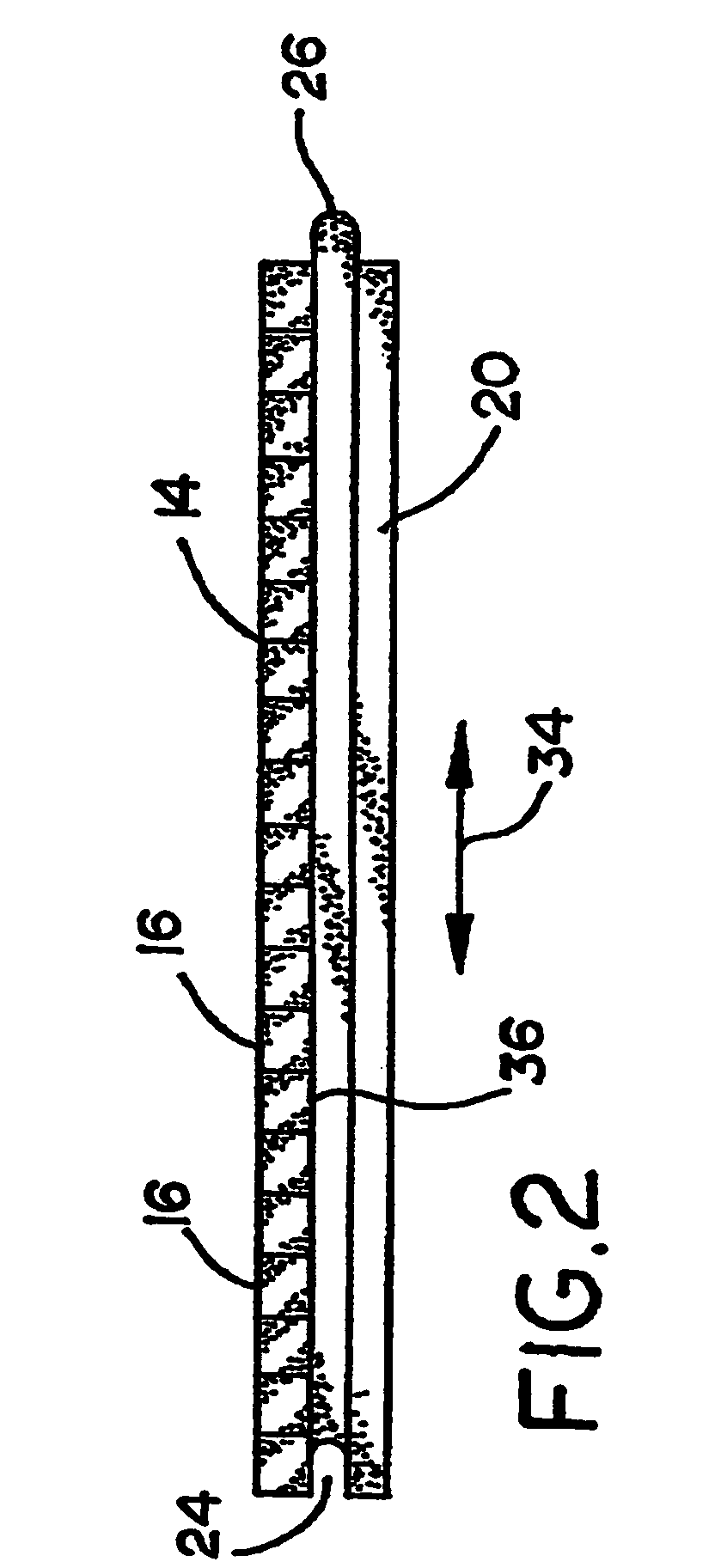Flexible two-ply flooring system
a flexible, two-ply technology, applied in the direction of resiliently mounted floors, wood layered products, other domestic articles, etc., can solve the problems of warping, twisting and buckling of flooring planks, less flexibility, and longer length of flooring planks, so as to increase flexibility and dimensional stability, and less wood or bamboo material
- Summary
- Abstract
- Description
- Claims
- Application Information
AI Technical Summary
Benefits of technology
Problems solved by technology
Method used
Image
Examples
example 1
[0044]The combined floor covering if this invention comprises a surface board and a bottom board joined together by an adhesive layer or suitable adhesive. The surface board and bottom board form an angle of 45° to 90° staggered with respect to each layer or surface according to the respective fiber direction of each layer. The said bottom board is comprised of plurality of strips being spaced apart, preferable at least one millimeter. The strips are parallel to each other and have a joint between them. The said combined floor covering has tongue and groove at its periphery for mortise joint. In an embodiment, the bottom board may also be parallel to each other without a joint between them. In another embodiment, the combined flooring can also be without the tongue and groove at its periphery for mortise joint, i.e. with flat joint.
example 2
[0045]This invention provides for an improved two-ply flooring having a cross-grain bottom ply. The original design emphasizes the control of cupping deformation in the transverse direction. In the improved two-ply flooring, an one-ply cross grain softwood with 0.3-0.4 densities is added between the top layer and the bottom layer. The improved two-ply flooring having a cross-grain bottom ply alleviates both shrinkage and expansion of the bottom layer caused by the change of moisture content. Consequently, the improve two-ply flooring reduces bending in the length direction greatly.
PUM
 Login to View More
Login to View More Abstract
Description
Claims
Application Information
 Login to View More
Login to View More - R&D
- Intellectual Property
- Life Sciences
- Materials
- Tech Scout
- Unparalleled Data Quality
- Higher Quality Content
- 60% Fewer Hallucinations
Browse by: Latest US Patents, China's latest patents, Technical Efficacy Thesaurus, Application Domain, Technology Topic, Popular Technical Reports.
© 2025 PatSnap. All rights reserved.Legal|Privacy policy|Modern Slavery Act Transparency Statement|Sitemap|About US| Contact US: help@patsnap.com



